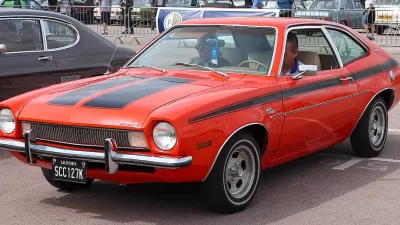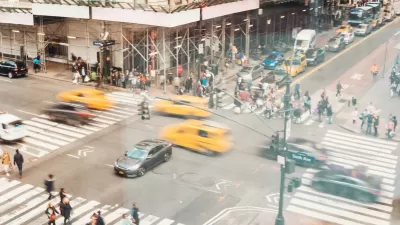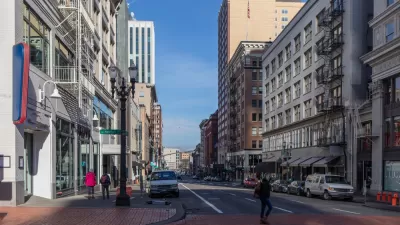After a decade of steady declines in traffic-related fatalities in New York City, amid a focused effort to improve traffic safety, Robert Kolker examines why such deaths spiked upward of 23 percent in the past year.
Thanks to the efforts of Mayor Bloomberg and transportation commissioner Janette Sadik-Khan to "redesign roadways, install bicycle lanes, and implement other new safety measures," New York's streets are now being shared equitably by cars, walkers, and cyclists "[t]o a greater degree than at any time since before World War II," says Kolker. In light of these efforts, which have made New York’s traffic-fatality rate far lower than many other big cities’, Kolker asks what is to blame for the recent spike in such deaths: is it a fluke or does it show the limits of traffic safety design and engineering?
"Sadik-Khan says the number may be a fluke. She notes that New York’s downward trend in deaths has never been consistent year-to-year. 'In fact, every other year since 2005 has seen a slight uptick in fatalities—2006, 2008, and 2010—compared to the record lows in the intervening years when the number nose-dived.'”
"Safety advocates, however, argue that the city is still overlooking critical problems. Although the new bike lanes protect riders in some ways, for instance, critics say that sharing ever-narrowing roadways has created new hazards...Cars still speed, drivers still drink, and jaywalkers still pay no attention, especially with smartphones to distract them."
“I wonder if we’ve reached a critical mass where so many people are looking down and so many people are listening to headphones and so many drivers are texting that the probability of an inattentive walker and an inattentive driver is much greater,” says Sam Schwartz, a.k.a. Gridlock Sam, the transportation consultant and traffic guru.
"Safety advocates say the DOT needs to continue to look for new engineering solutions that can help slow down speeding vehicles. But the biggest problem, they say, lies with law enforcement."
FULL STORY: Death by Car

Alabama: Trump Terminates Settlements for Black Communities Harmed By Raw Sewage
Trump deemed the landmark civil rights agreement “illegal DEI and environmental justice policy.”

Study: Maui’s Plan to Convert Vacation Rentals to Long-Term Housing Could Cause Nearly $1 Billion Economic Loss
The plan would reduce visitor accommodation by 25% resulting in 1,900 jobs lost.

Planetizen Federal Action Tracker
A weekly monitor of how Trump’s orders and actions are impacting planners and planning in America.

Wind Energy on the Rise Despite Federal Policy Reversal
The Trump administration is revoking federal support for renewable energy, but demand for new projects continues unabated.

Passengers Flock to Caltrain After Electrification
The new electric trains are running faster and more reliably, leading to strong ridership growth on the Bay Area rail system.

Texas Churches Rally Behind ‘Yes in God’s Back Yard’ Legislation
Religious leaders want the state to reduce zoning regulations to streamline leasing church-owned land to housing developers.
Urban Design for Planners 1: Software Tools
This six-course series explores essential urban design concepts using open source software and equips planners with the tools they need to participate fully in the urban design process.
Planning for Universal Design
Learn the tools for implementing Universal Design in planning regulations.
Caltrans
Smith Gee Studio
Institute for Housing and Urban Development Studies (IHS)
City of Grandview
Harvard GSD Executive Education
Toledo-Lucas County Plan Commissions
Salt Lake City
NYU Wagner Graduate School of Public Service





























